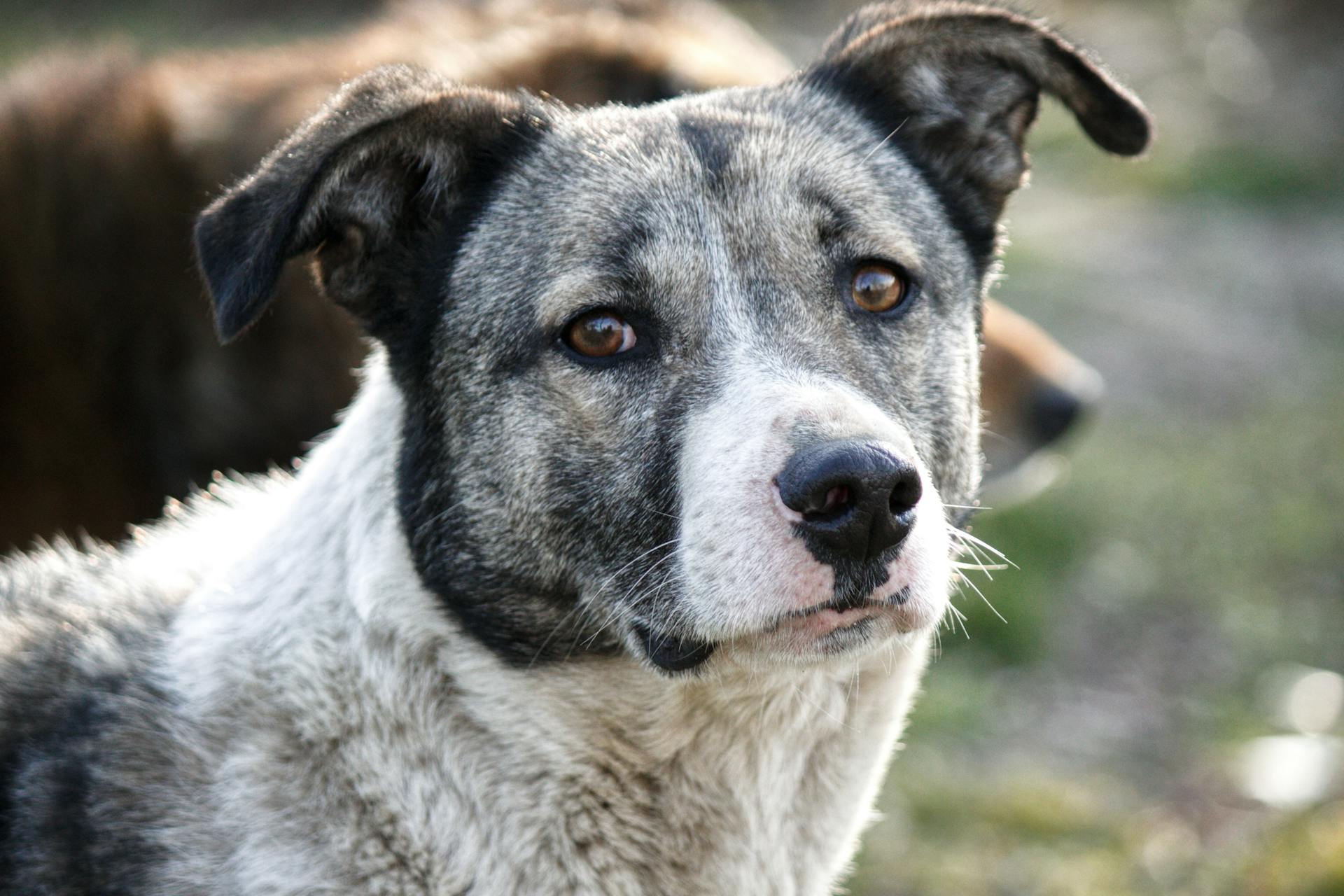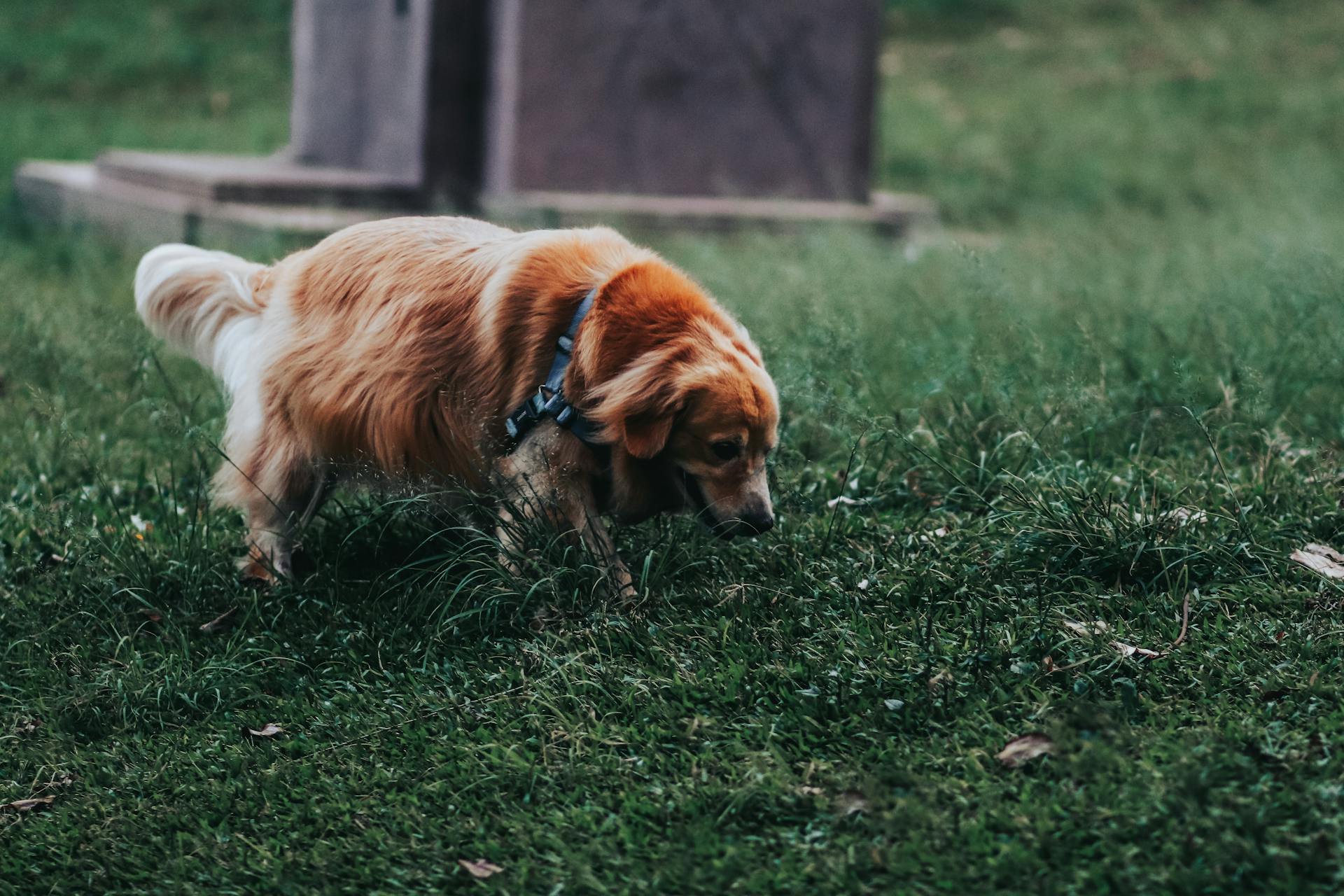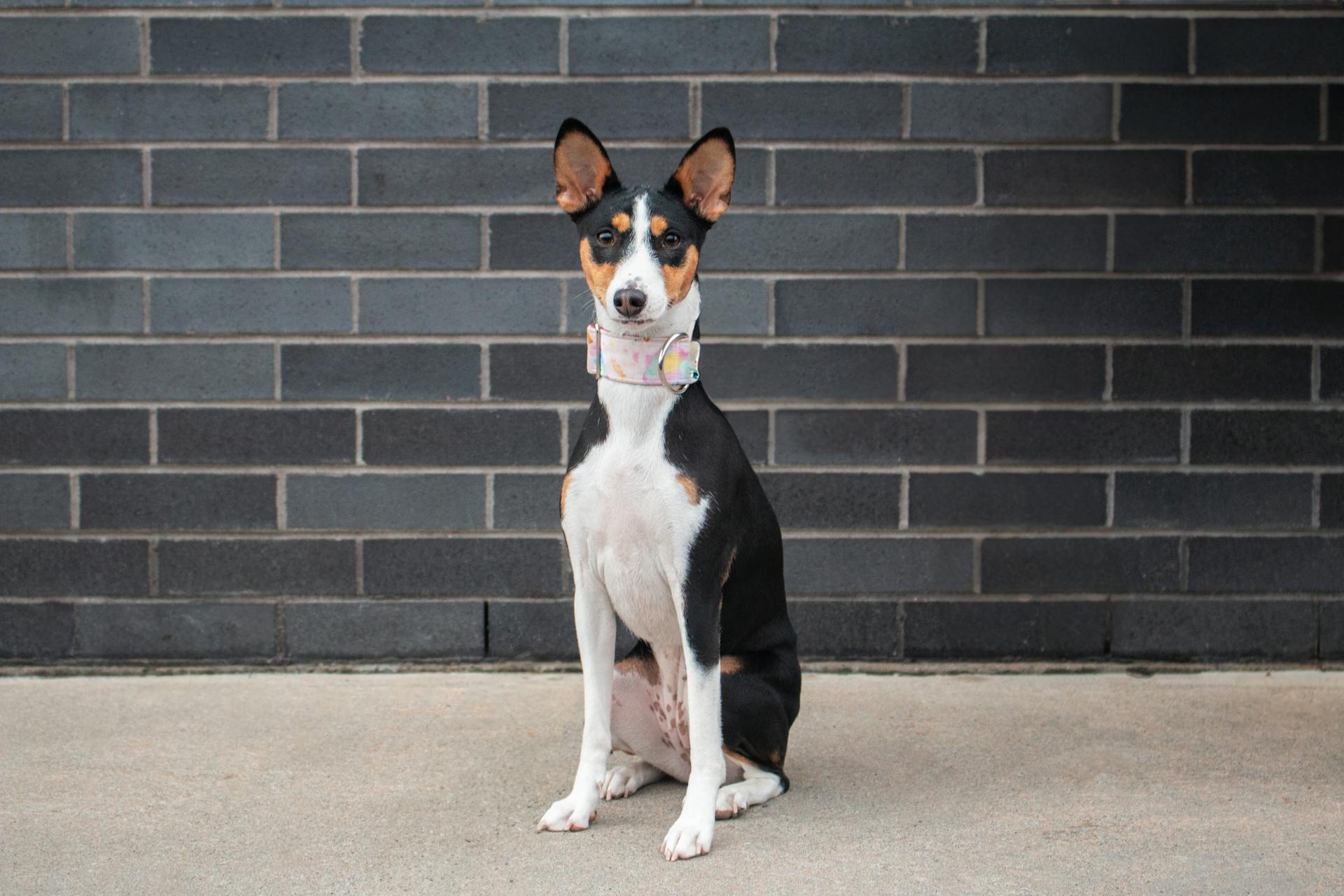
Red Heelers are known for their intelligence and strong will, but these traits can sometimes manifest as behavior problems.
They can be prone to nipping and biting, especially if they're not socialized properly from an early age.
Red Heelers are highly energetic dogs that require regular exercise to keep them happy and healthy.
If they don't get enough physical and mental stimulation, they can become destructive and restless.
Understanding Red Heeler Behavior
Australian Cattle Dogs, also known as Red Heelers, are incredibly energetic canines that require substantial exercise and mental engagement.
Their high energy levels can lead to destructive behavior like chewing, digging, or escaping if they don't receive sufficient outlets for their vigor.
To prevent this, ensure your Red Heeler receives adequate exercise, mental stimulation, and access to chew toys.
Crate training can be a valuable tool in preventing destructive conduct when you're unable to supervise them at home.
The majority of behavior issues in Red Heelers typically stem from one of four underlying causes, which may include problems like destructive behavior, excessive digging, nuisance barking, and more.
These issues often arise from feelings of frustration.
Patience and understanding are essential when resolving behavior concerns in Red Heelers.
Recognizing your dog's requirements and natural instincts, and supplying them with suitable training and outlets, can prevent behavioral problems while fostering a strong connection between you and your canine companion.
Red Heelers possess a robust herding instinct, which can surface as nipping or biting towards people or other animals.
Guiding this behavior towards suitable channels, such as engaging in herding or agility training, can help redirect their instincts.
Ensuring your Red Heeler receives abundant exercise and mental stimulation can also reduce their inclination to herd inappropriately.
You can't eliminate instinctive behaviors, but you can guide or redirect them, especially in the absence of cattle for herding.
Introducing herding games with a ball can be an excellent substitute for actual cattle, and can effectively decrease their inclination to herd people and other dogs.
Establishing socialization is fundamental in averting aggression, anxiety, and fear in Red Heelers.
Gradually acquainting your dog with different people, animals, and settings in a controlled, positive fashion fosters confidence and diminishes stress.
On a similar theme: Herding Dog Behavior Problems
Common Behavior Problems
Australian Cattle Dogs can exhibit a range of behavior problems if not properly cared for. Destructive behavior is a common issue, often resulting from a lack of exercise and mental stimulation.
To prevent destructive behavior, it's essential to provide your dog with sufficient exercise, mental stimulation, and access to chew toys. Crate training can also be a valuable tool in preventing destructive conduct when you're unable to supervise them at home.
Aggression is another potential behavior problem in Australian Cattle Dogs, often stemming from feelings of frustration or a lack of socialization. Socialization is key to preventing aggression, allowing your dog to acclimate to various people and scenarios in a controlled setting.
Expand your knowledge: Do Husky Dogs Bark
Aggression
Aggression can be a problem in Australian Cattle Dogs, leading to territorial and protective behaviors towards their families.
These behaviors can sometimes be directed at strangers or other dogs, which can be intimidating and even threatening.
Socialization is key to preventing aggression, allowing your dog to get used to various people and scenarios in a controlled setting.
Establishing a clear leadership role within the pack is also crucial, as it helps your dog understand what is expected of them.
Setting well-defined boundaries and behavior expectations for your dog is equally vital, as it helps prevent unwanted behaviors.
Explore further: Are Border Collies Jealous Dogs
Destructive Behavior
Destructive behavior is a common issue in Australian Cattle Dogs. It's essential to provide your dog with sufficient exercise to burn off their energy.
These dogs are incredibly energetic canines, demanding substantial exercise and mental engagement. Without it, they might engage in unwanted actions like chewing, digging, or escaping.
Providing your dog with suitable avenues for expanding their vigor can help prevent destructive behavior. This can include activities like running, playing fetch, or going on long walks.
Crate training can also be a valuable tool in averting destructive conduct when you're unable to supervise your dog at home.
Explore further: Red Blue Heeler Mix Dogs
Chasing
Chasing is a common behavior problem in Australian Cattle Dogs, which can pose risks if not addressed through training and supervision. They have a powerful chasing instinct that may lead them to pursue cars, bicycles, or other mobile objects.
Australian Cattle Dogs need ample exercise and mental stimulation to decrease their inclination to engage in chasing behaviors. This can help redirect their energy and focus.
Curious to learn more? Check out: Red Australian Shepard
Ensuring your dog receives regular physical activity can help reduce their urge to chase. A tired dog is a happier dog, and a happier dog is less likely to engage in destructive or risky behaviors.
By providing your Australian Cattle Dog with adequate exercise and mental stimulation, you can help manage their chasing instinct and keep them safe.
Addressing Behavior Issues
Australian Cattle Dogs are prone to destructive behavior if they don't receive enough exercise and mental stimulation. To prevent this, make sure your dog gets plenty of physical activity and engages in mentally challenging activities.
Crate training can be a valuable tool in managing destructive behavior, especially when you're unable to supervise your dog at home. Consistency and boundaries are also crucial in shaping your dog's behavior.
By establishing clear rules, boundaries, and expectations, you can help your dog understand your authority and avoid taking on a leadership role. This can be achieved by calmly and firmly correcting undesirable behaviors, such as nipping, with a decisive "No" or "Leave it" command.
Desensitization techniques can also be beneficial in addressing anxiety or fear-related issues in your Australian Cattle Dog. This involves gradually exposing your dog to the anxiety-inducing stimulus in a controlled and constructive way, rewarding calm behavior along the way.
A unique perspective: Do French Bulldogs Have Separation Anxiety
Separation Anxiety
Australian Cattle Dogs are deeply social animals, relishing human interaction and attention.
They may experience anxiety and engage in destructive behaviors when left alone for prolonged periods.
To mitigate separation anxiety, it’s crucial to progressively introduce your dog to solitude, starting with brief intervals and gradually extending them.
Offering your dog a variety of toys and mental stimulation can help keep them engaged during your absence.
This can be as simple as leaving a treat-filled puzzle toy or a long-lasting chew toy for them to enjoy.
Gradually extending the time you're away from your dog can help them become more comfortable with your departure.
By doing so, you'll help your Australian Cattle Dog feel more secure and reduce the likelihood of destructive behaviors.
See what others are reading: Australian Shepherd Red Heeler Mix
Lack of Clear Rules and Boundaries
Australian Cattle Dogs are highly receptive to well-defined boundaries and steady training. Establishing guidelines and behavior expectations for your dog, then reliably upholding them can mitigate behavior problems and bolster positive conduct.
Establishing clear rules and boundaries is essential for your dog's development, as they were originally bred to collaborate closely with human handlers. This means they need to recognize human authority to work harmoniously.
Australian Cattle Dogs are determined canines and may test their owners for authority, which can lead to dominance-related problems if not addressed. It’s essential to assert your role as the pack leader and define distinct boundaries and guidelines for your dog’s conduct.
Consistency and firmness in leadership are key to a well-behaved Australian Cattle Dog. Being firm doesn’t imply harsh punishment for their mistakes, but rather calmly and firmly correcting undesirable behaviors.
Australian Cattle Dogs can display strong-willed tendencies and may assume a leadership role if they don’t respect your position. Establishing consistency and firmness in leadership is essential when caring for a Blue Heeler.
Use Desensitization Techniques
Desensitization techniques can be a game-changer for addressing behavior issues in Australian Cattle Dogs. By introducing your dog to anxiety-inducing stimuli in a controlled and constructive way, you can help them become more confident and calm.
Gradually ramping up exposure to the stimulus is key. For example, if your dog experiences fear or anxiety when approached while eating, start by standing a considerable distance away and gradually decrease the distance over time. This process helps your dog associate your presence near their food with positive outcomes.
Desensitization involves introducing your dog to the triggering situations, starting with low-intensity encounters and gradually increasing the intensity. Counter-conditioning, on the other hand, involves teaching your dog to associate the presence of the trigger with positive experiences.
Here are some steps to follow for desensitization and counter-conditioning:
Punishing your dog for resource guarding can exacerbate the problem and lead to increased aggression. Instead, focus on positive reinforcement and reward-based training to modify your dog's behavior. By consistently rewarding your dog for desired behaviors, you reinforce the idea that there's no need to guard resources, as good things happen when they share or relinquish them.
Final Thoughts
Addressing behavior issues in Australian Cattle Dogs requires a deep understanding of their innate characteristics.
Territorial tendencies and herding instincts are common challenges that arise from their natural behavior.
Regular exercise is essential to keep these high-energy dogs happy and healthy.
Mental stimulation is just as important as physical exercise, and can be achieved through activities like puzzle toys and scent work.
Clear boundaries are crucial in establishing yourself as the pack leader and preventing aggression, anxiety, and fear.
Socialization is key to preventing behavior issues, and should start from an early age.
Excessive barking, destructiveness, and chasing can be alleviated through training, consistency, and positive reinforcement techniques.
Desensitization methods can help reduce fear and anxiety in specific situations, and basic commands can improve obedience.
Seeking professional guidance from a dog trainer or behavior specialist is a wise move if you're experiencing difficulty with your Australian Cattle Dog.
Frequently Asked Questions
What are the bad habits of red heelers?
Red Heelers exhibit behaviors like chasing, nipping, barking, and territorial instincts that can be challenging in a household setting. These instincts require alternative outlets to manage their high energy levels and prevent unwanted behaviors.
Sources
- https://www.webmd.com/pets/dogs/what-to-know-australian-cattle-dogs
- https://medium.com/@ziablogger2023/how-to-address-australian-cattle-dog-behavior-issues-13581206ba8a
- https://iheartdogs.com/7-strategies-to-stop-your-australian-cattle-dogs-resource-guarding/
- https://www.doggoneproblems.com/minka/
- https://leerburg.com/red-heeler-qa.php
Featured Images: pexels.com


